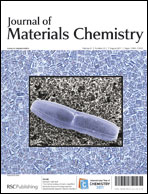This is a report on the controlled generation of a polyamine@silica hybrid nanograss surface on arbitrary substrates. A very simple biomimetic silica mineralization reaction (i.e., ambient temperature and neutral aqueous medium conditioned hydrolytic polycondensation of alkoxy silane) performed on a self-assembled, nanostructured linear polyethyleneimine (LPEI) matrix allowed the production of nanostructured silica films with specific surface morphologies. It was found that the well-defined and densely arrayed nanograss surface of hybrid LPEI@silica could be achieved by adjusting the crystallization time of LPEI on the substrates, silica deposition time and LPEI concentrations. Comparative studies indicated that the LPEI with a linear backbone is important for nanograss formation due to its specific crystalline nature. By using a polystyrene substrate with tunable surface chemistry, we have confirmed that an efficient molecular-level interaction of LPEI with substrates is important for creation of a high-quality and continuous silica nanograss film. The combined studies from XRD, XPS and ζ potential supported that the crystalline, self-assembled and nanostructured LPEI layer on the substrate serves as catalyst-active and biomimetic template for site-selective silica mineralization to give the polyamine@silica nanograss. Moreover, by modifying the nanograss surface with a fluorocarbon compound, we are able to create a super-liquid-repellent surface, which shows the contact angle of >179°, 149.6° and 147.3° for water, 1 : 1 water–ethanol in volume (γ = 24.7 mN M−1) and inkjet ink (γ = 24.0 mN M−1), respectively. Our nanograss surface has potential applications for liquid transferring, self-cleaning, microfluid devices, sensing and cell engineering.

You have access to this article
 Please wait while we load your content...
Something went wrong. Try again?
Please wait while we load your content...
Something went wrong. Try again?


 Please wait while we load your content...
Please wait while we load your content...